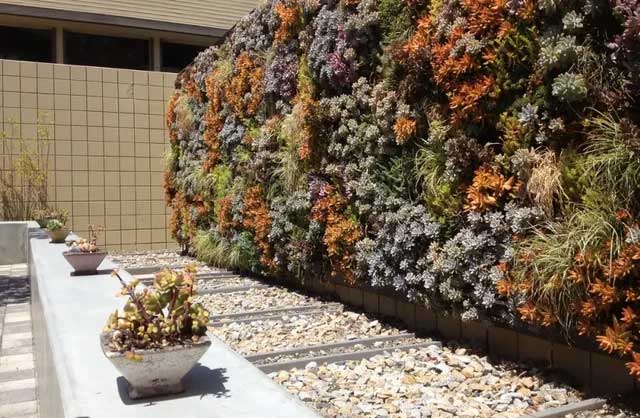A new study conducted by the University of Plymouth could change the way we heat and cool our homes. In the experiment, the research team used walls of a lodging built before the 1970s as their monitoring targets; they observed differences between two subjects, conventional walls and “living walls.”
In this study, the authors used the term “living walls” to refer to a wall covered with “a flexible fabric system with openings that allow for soil placement and plant growth.” Additionally, living walls are not different from “dead walls.”

Illustration of a “living wall.” (Photo: FLICKR).
The two walls were placed at equivalent heights, facing the same direction. After 5 weeks of monitoring, the research team concluded that living walls lost approximately 31.4% less heat than conventional walls, and the daily temperature fluctuation of living walls was also lower.
When a building retains heat, the amount of energy needed to maintain a stable temperature will be lower. The report also highlights the air quality improvement effects of plants. This is good news for buildings that frequently receive sunlight and face the risk of heat loss.
The new findings have the potential to enhance the quality of life in hot climate areas. According to the report, “by reducing the impact of sunlight on buildings, green walls can lower indoor temperatures by providing shade for sun-facing surfaces.” Plants can utilize a portion of light energy for photosynthesis, thereby reflecting some of the heat that radiates onto buildings.
In the conclusion, the study asserts that “continuing to monitor the experiment will reveal the impact of plant growth on walls annually on temperature regulation performance.” At the same time, the team emphasizes that future research could seek ways to improve today’s findings and identify suitable plant species for living walls.


















































